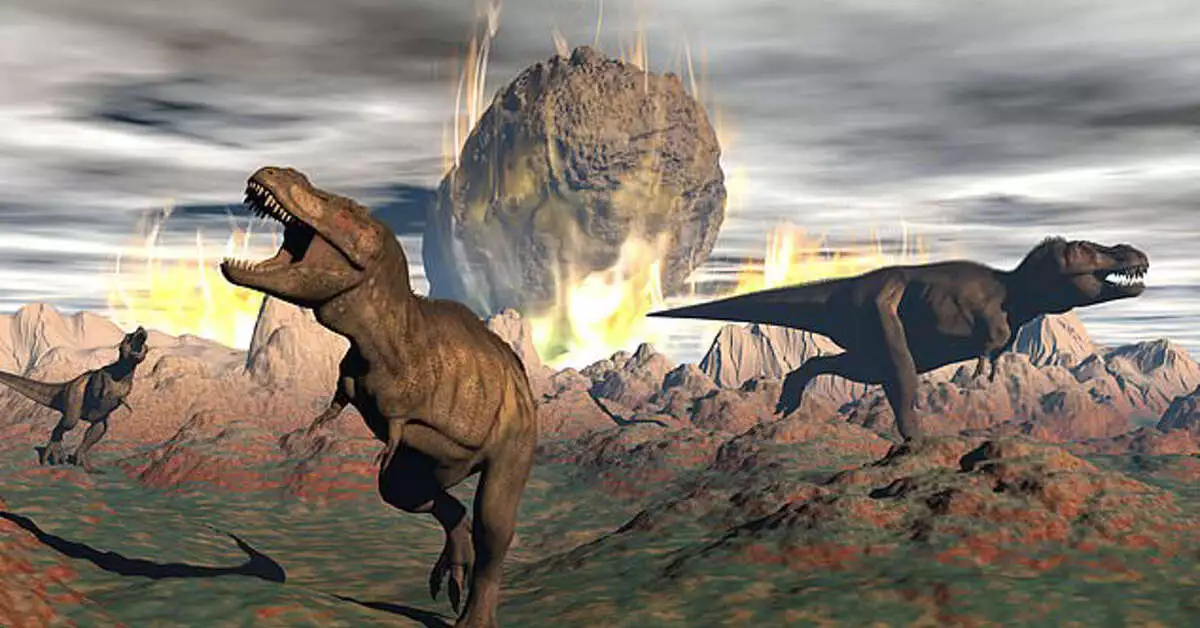Researchers are actively investigating the enigma surrounding the extinction of dinosaurs. Recent findings suggest that it wasn’t an asteroid impact, but rather the expulsion of debris that played a pivotal role in the mass extinction event that wiped out the dinosaurs 66 million years ago.

This revelation arises from a study led by the Royal Observatory of Belgium, which determined that dust from pulverized rock was ejected into Earth’s atmosphere. This ejected debris obstructed sunlight and hindered the photosynthesis of plants, ultimately triggering a global nuclear winter. The colossal volume of dust, estimated at about 2,000 gigatonnes—equivalent to more than 11 times the weight of Mt. Everest—persisted in the atmosphere for up to 15 years, resulting in a worldwide environmental catastrophe.
ALSO READ: Shocking Revelation: Antarctica’s Ice Melting Faster Than Ever! Is It Already Too Late?
Consequently, the depletion of vegetation led to the starvation of many herbivorous species, including specific dinosaurs, culminating in a catastrophic mass extinction event that eradicated 75 percent of Earth’s biodiversity.
Scientists have dedicated significant effort to unveil the mystery of dinosaur extinction ever since the discovery of the Chicxulub Crater in 1978. However, geological evidence alone is insufficient to definitively attribute the dinosaurs’ extinction to the massive asteroid impact.
ALSO READ: NASA’s Epic Journey to Uncover the Secrets of Galactic Formation: A Supernova Odyssey
The prevailing theory until recently suggested that sulfur from the asteroid’s impact, or soot from the global wildfires it ignited, darkened the sky and brought about an extended period of cold and darkness, proving fatal for most life forms on Earth.
Nonetheless, research published on Monday, based on particles discovered at a critical fossil site, reasserts an earlier hypothesis, indicating that dust ejected by the asteroid may have caused the impact winter.
Researchers from the Chinese Academy of Sciences examined over 1,000 fossilized dinosaur eggs and eggshells at the Tanis fossil site in North Dakota, a location roughly 1,865 miles from the impact crater. These particles, measuring between 0.8 and 8.0 micrometers, were found to be ideally sized to remain suspended in the atmosphere for an extended period. When incorporated into climate models similar to those used for today’s Earth, it became evident that dust played a more substantial role in the mass extinction event than previously believed.
Of all the materials expelled into the atmosphere by the asteroid, researchers estimated that 75 percent was dust, 24 percent sulfur, and one percent soot.
Geophysicist Sean Gulick from the University of Texas at Austin, though not directly involved in the research, acknowledged this study as a captivating endeavor to address the compelling question of what led to the impact winter. He emphasized the importance of understanding the last mass extinction event for comprehending the past and preparing for the future, hinting at the possibility of predicting future mass extinctions.









